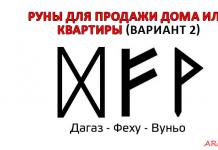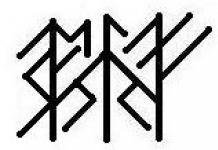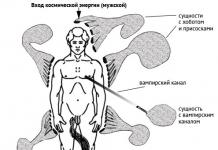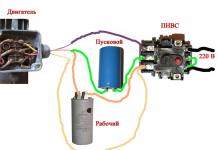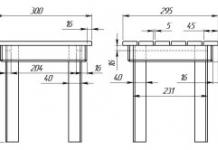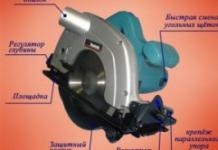A meteorite is a piece of matter, of cosmic origin, that has fallen on the surface of any large celestial object. Literally, the meteorite is translated as "a stone from the sky." The vast majority of meteorites that have been found on earth weigh from a few grams to several kilograms. Goba - the largest meteorite found, weighed approximately 60 tons. Scientists believe that up to 5 tons of meteorites fall to Earth every day. But until quite recently, their existence was not recognized by well-known academicians and specialists in space research. All information and hypotheses about their extraterrestrial origin were recognized as pseudoscientific and stopped in the bud.
Meteorites are considered the oldest known minerals, which can be up to 4.5 billion years old. Therefore, scientists believe that the remnants of the processes that accompanied the formation of the planets should be preserved in them. Meteorites remained the only unique samples of extraterrestrial origin until samples of lunar soil were brought to Earth. Chemists, geologists and physicists have been collecting information and studying meteorites in detail for more than two hundred years. This knowledge gave impetus to the development of a new science of meteorites. People have known about the fall of celestial bodies to Earth since ancient times, and some nations even revered and worshiped them. Only scientists were very skeptical about them. But the facts and common sense prevailed, over time it became pointless to deny their cosmic origin.
Classification of meteorites
There are several types and names of meteorites: siderolites, uranoliths, aerolites, meteor stones and others. Any cosmic body before entering the atmosphere is called a meteoroid. It is classified according to various astronomical features. It can be a meteorite, an asteroid, space dust, fragments, etc. Flying through the earth's atmosphere and leaving a bright luminous trail, the object can be called a fireball or meteor. And a solid body that fell to the surface of the Earth and left a characteristic depression - a crater, is considered a meteorite. It is customary to give them "names" after the names of the places where they were found.

Stony meteorites are divided into two subclasses: chondrites and achondrites. Chondrites are so named because almost all of them contain chondrules - spheroidal formations of predominantly silicate composition. Chondrules are the most primitive types of meteorites. They are in a fine crystalline matrix, and most of the chondrules are less than 1 mm in diameter. Chondrites can be up to 4.5 billion years old.
Less than 10% of the total number of stony meteorites form a subclass of achondrites. Achondrites are very similar to terrestrial igneous rocks. They are devoid of chondrules and consist of a substance that was formed as a result of the processes of melting of planetary and protoplanetary and planetary bodies. Most of the meteorites that hit Earth come from the asteroid belt between Mars and Jupiter, and this is not surprising. After all, the largest and most famous accumulation of meteorite bodies is observed there.
According to the nature of detection, meteorites are divided into "fallen" and "found". Found, consider those meteorites, the fall of which was not observed by man. Their belonging to celestial bodies is established by studying the features of their composition. The vast majority of meteorites in private collections and world museums are just finds. Very often, stone meteorites simply go unnoticed, as they can easily be confused with ordinary terrestrial rocks.
The main feature of meteorites is the so-called melting crust. It has a thickness of no more than 1 mm and covers the meteorite in the form of a thin shell from all sides. Black bark is especially visible on stone meteorites.
The second sign of meteorites are characteristic pits on their surface. Usually meteorites are in the form of debris. But sometimes there are meteorites of a wonderful cone shape. They resemble the head of a projectile. Such a conical shape is formed as a result of the “grinding” action of air.
The largest solid meteorite was found in Africa in 1920. This meteorite is iron and weighs about 60 tons. Usually, meteorites weigh several kilograms. Meteorites weighing tens, and even more so hundreds of kilograms, fall very rarely. The smallest meteorites weigh fractions of a gram. For example, at the site of the fall of the Sikhote-Alin meteorite, the smallest specimen was found in the form of a grain weighing only 0.18 g; the diameter of this meteorite is only 4 mm.
Most often, stone meteorites fall: on average, out of 16 fallen meteorites, only one turns out to be iron.
WHAT ARE METEOORITES COMPOSED OF?
By studying the chemical composition of meteorites, scientists have found that meteorites are composed of the same chemical elements that are found on Earth. No new elements were found in them.

The eight elements most commonly found in meteorites are iron, nickel, sulfur, magnesium, silicon, aluminium, calcium, and oxygen. All other chemical elements of the periodic table are found in meteorites in negligible, microscopic quantities. When combined chemically, these elements form various minerals. Most of these minerals are found in terrestrial rocks. And absolutely in insignificant quantities in meteorites were found such minerals that are not and cannot be on Earth, since it has an atmosphere with a high content of oxygen. Combining with oxygen, these minerals form other substances.
Iron meteorites are almost entirely composed of iron combined with nickel, while stony meteorites are mainly composed of minerals called silicates. They are composed of compounds of magnesium, aluminum, calcium, silicon and oxygen.
Of particular interest is the internal structure of iron meteorites. Their polished surfaces become shiny like a mirror. If such a surface is etched with a weak solution of acid, then usually an intricate pattern appears on it, consisting of individual strips and narrow borders intertwined with each other. Parallel thin lines appear on the surfaces of some meteorites after etching. All this is the result of the internal crystal structure of iron meteorites.
No less interesting is the structure of stone meteorites. If you look at the break of a stone meteorite, then often even with the naked eye you can see small rounded balls scattered over the surface of the break. These balls sometimes reach the size of a pea. In addition to them, scattered tiny shiny white particles are visible in the fracture. These are nickel iron inclusions. Among these particles there are golden sparkles - inclusions of a mineral consisting of iron in combination with sulfur. There are meteorites, which are, as it were, an iron sponge, in the voids of which grains of a yellowish-green color of the mineral olivine are enclosed.
ORIGIN OF METEORITES
Most scientists believe that meteorites are fragments of one or (more likely) several large celestial bodies, similar to asteroids that previously existed in the solar system.

Soviet scientists - academician V. G. Fesenkov, S. V. Orlov and others - believe that asteroids and meteorites are closely related. Asteroids are giant meteorites, and meteorites are very small, dwarf asteroids. Both are fragments of planets that, billions of years ago, moved around the Sun between the orbits of Mars and Jupiter. These planets apparently fell apart as a result of the collision. Countless fragments of various sizes were formed, down to the smallest grains. These fragments are now worn in interplanetary space and, colliding with the Earth, fall on it in the form of meteorites.
HELP OF THE POPULATION IN COLLECTING METEORITES
Meteorites always fall unexpectedly, and it is impossible to predict when and where this will happen. Therefore, specialists cannot prepare in advance for observations of meteorite falls. Meanwhile, the study of the motions of meteoroids in the earth's atmosphere is of very great scientific importance.
In addition, observing the fireball, you can approximately determine the place where the meteorite could fall, and search for it there. Therefore, scientists in their work can be of great help to the population if eyewitnesses of the meteorite fall describe in detail all the phenomena that they noticed during the movement of the fireball and the fall of the meteorite to Earth.
Upon receipt of a large number of such descriptions made by eyewitnesses in different settlements, it is possible to determine quite accurately the path of the meteoroid in the Earth's atmosphere, the height of the appearance and disappearance of the fireball, as well as the slope and direction of its path. Messages about meteorites should be sent to the Committee on Meteorites of the USSR Academy of Sciences.
When a meteorite is found, in no case should it be crushed. It is necessary to take all measures to protect it and transfer it to the Committee on Meteorites.
When describing the phenomenon of fireballs, it is necessary, if possible, to answer the following questions: 1) the date and time of the fall; 2) place of observation; 3) the direction of movement of the fireball; 4) flight duration of the fireball in seconds; 5) the dimensions of the bolide compared with the apparent dimensions of the Moon or the Sun; 6) the color of the car; 7) whether the area was illuminated during the flight of the car; 8) whether crushing of the fireball was observed; 9) whether there was a trace left after the car; what is its form and subsequent change, as well as the duration of visibility; 10) what sounds were observed during the flight of the fireball and after its disappearance.
The description must also include the last name, first name, patronymic and address of the observer.
If you find an error, please highlight a piece of text and click Ctrl+Enter.
On November 30, 1954, a meteorite hit the roof of the house of an American Ann Hodgesy and bruised her in the shoulder and thigh. The woman's health did not cause concern, but she spent several days in the hospital. Today, Ann is the only person hit by a meteorite, although about 4 billion of these celestial bodies fall to Earth every day.
Fukang meteorite - the most beautiful meteorite that fell to Earth
Over the entire history of observations, scientists have counted 24 thousand fallen meteorites, 34 of which, according to astronomers, are of Martian origin. Astronomers have calculated: the probability that a meteorite will hit a person is 1 chance in 180 years. ©
The longest meteor shower lasted 10 hours
On the night of November 13, 1833, the longest meteor shower in the history of planet Earth took place in the eastern United States, which lasted for 10 hours. The meteor shower occurred during the most powerful meteor shower, which today is called the Leonids. In total, about 240 thousand meteorites of various sizes fell to earth that night. A similar phenomenon can be observed annually in mid-November, of course, on a more modest scale.

2. The Leonid Stream (photo from the space telescope)
The largest meteorite to hit Earth is 80,000 years old
The largest meteorite fell to Earth in prehistoric times. It was found in 1920 in Namibia at Hoba West Farm, located near the town of Grootfontein, by farmer Jacobus. The Goba meteorite was unearthed and left in the place where it was found. The weight of this iron giant is 66 tons with a volume of 9 cubic meters. and dimensions of 2.7 by 2.7 meters. Today, the Goba meteorite is the largest piece of iron of natural origin. True, since the meteorite was found, it has “lost” 6 tons, and all because of erosion and vandalism.

3. Goba meteorite - the largest meteorite (Namibia)
The most poisonous meteorite fell in Peru
A meteorite that fell on September 15, 2007 near Lake Titicaca in Peru made a lot of noise. Eyewitnesses first heard a noise resembling the sound of a falling plane, and then they saw a fiery body engulfed in fire. At the site of the fall of the meteorite, a crater 6 meters deep and 30 meters in diameter was formed, and a fountain of boiling water began to beat from the crater. Apparently, the meteorite contained some toxic substances, since 1.5 thousand local residents became seriously ill, and severe headaches began.

4. The fall of the Peruvian meteorite
Chelyabinsk fireball: the most powerful explosion of a cosmic body since the Tunguska meteorite
On February 15, 2013, a meteorite exploded over Chelyabinsk, the energy of which is estimated by scientists at 500 kilotons of TNT, which is more than 100 times greater than the Sutters Mill meteorite that exploded in 2012 in the United States. The diameter of the meteorite before the explosion was, according to scientists, 18–20 meters, and the weight was 13 thousand tons. The largest fragment of a celestial body weighing 600 kg was lifted from the bottom of Lake Chebarkul.

5. Place where one of the fragments of the Chelyabinsk meteorite fell. Lake Chebarkul
Scientists suggest that the Chelyabinsk meteorite is part of a larger asteroid from which it separated 1.2 million years ago.
The scale of the damage is impressive. In Chelyabinsk alone, windows were broken in 4.1 thousand houses, and 1.2 thousand people asked for medical help. In nearby villages, suspended ceilings collapsed, window frames were squeezed out, cracks appeared in the walls, electricity supply stopped, gas supply and mobile communications were interrupted.

6. Chelyabinsk after the meteorite explosion
The diameter of the largest meteorite crater on Earth is about 300 km
The Vredefort impact crater in Johannesburg (South Africa), with a diameter of about 300 km, is today considered the largest meteorite impact crater on Earth. It occupies 6% of South Africa. Its age is estimated at 1.9 billion years. Currently, 3 cities and a lake are located in the center of the crater.

7. Vredefort crater - the largest trace of a meteorite on Earth
The largest meteorite crater in Russia is the Karsky crater, located on the coast of Baydaratskaya Bay on the Yugorsky Peninsula, with a diameter of 120 km.
The largest collection of meteorites is in Russia
The largest collection of meteorites is in the Mining Museum of St. Petersburg - 300 celestial bodies. The largest specimen on display is a 450-kilogram meteorite. To be precise, this is part of the giant Sikhote-Alin meteorite, which fell apart on February 12, 1947 over the Ussuri taiga.

8. Collection of meteorites in St. Petersburg
The decree on the "search for celestial bodies" was issued at one time by Empress Catherine II. The first exhibit was the Pallas Iron meteorite, which was discovered by Academician P.S. Pallas in the village of Medvedkovo, Krasnoyarsk Territory, during one of the Great Siberian expeditions. It is known that this meteorite was found in 1749 by the blacksmith Yakov Medvedev, who used its pieces to make various products. The block, weighing 687 kg, reached St. Petersburg from Siberia in 10 years. Later, the meteorite was cut into 2 parts, which are exhibited today in the museum.
The owner of the world's largest private collection of meteorites is Robert Haag from the USA. He collected heavenly stones from the age of 12. Today he has 2 tons of meteorites in his collection.
The most expensive meteorite went under the hammer for 330 thousand dollars
Today, meteorites can be bought in the United States at various auctions, as well as over the Internet. The cost of 1 gram varies from $1 to $1000. At the same time, Martian meteorites are valued much more expensively by collectors.
Today, collecting meteorites has become fashionable and profitable, according to experts from the largest auction houses. Interest in meteorites was sparked in 1996 when NASA reported that the 4.5 billion year old Hellen Hills 84001 meteorite found in Antarctica contained the remains of microorganisms that once lived on Mars.
The most expensive meteorite sold at auction today is a fragment of the Dar al Ghani 1058 meteorite, sold in the USA for $330 thousand. The weight of this space guest is 2 kg, and its distinctive feature is a flat shape. The meteorite was discovered in Libya in 1998. Dar al Ghani 1058 was not only the most expensive meteorite, but also the largest that has ever gone under the hammer.

9. Dar al Ghani 1058
A fragment of the Seimchan meteorite, which was found in the 1960s in Siberia, was sold for $44,000, which was 12 times higher than the original cost of the lot.
A meteorite that fell on a cow in 1972 was sold for $1,300.
Egyptian pharaohs wore meteorite jewelry
Scientists who study ancient Egypt have proven that the decorations of the pharaohs of this period are of extraterrestrial origin. Recently, 9 metal beads were found near the city of Al-Girza, which were attributed to the Gerze culture (4th century BC). British scientists examined the jewelry using a tomograph and stated that the iron jewelry was made from a meteorite. Scientists came to such conclusions, since up to 30% nickel was found in the composition of jewelry, and their age is more than 5 thousand years. It is interesting that the first data on the production of iron in this region date back only to the 7th century BC. BC. The metal is characterized by the Widmanstetten structure - this is the name of the pattern of large crystals that appear inside the meteorite during slow cooling.

10. Fragments of ancient Egyptian jewelry from a meteorite
Controversy rages around Buddhist artifact from the Ching meteorite
In 2009, at one of the auctions, a 10-kilogram sculpture "Iron Man" was sold - a statue of the Buddhist god Vaishravana, belonging to the pre-Buddhist Bon tradition of the 12th century. The statue was first discovered in 1938 by a Nazi expedition led by Ernst Schaefer. Prior to being sold at auction, the artifact was kept in a private collection. The results of geochemical analyzes showed that the statue was carved from ataxite, a very rare class of meteorites that is characterized by a high content of nickel. The auction claimed that the ancient statue was carved from a piece of the Chinga meteorite that fell about 15,000 years ago somewhere between Mongolia and Siberia.

11. Iron Man from the Chinga meteorite
Doubts about the origin of the sculpture were expressed by a specialist in Buddhism from Germany, Achim Bayer. Without denying the extraterrestrial origin of the material, the scientist claims that the Iron Man is a fake of the 20th century, and not an ancient artifact. Bayer points to the typical “pseudo-Tibetan features” of the sculpture: the object is “dressed” not in boots, but in European low shoes, he is not wearing traditional Buddhist attire, but trousers, a large beard, which Tibetan and Mongolian sacred sculptures never had, and a headdress and does look like a Roman helmet.
Bayer suspects that the sculpture was made in Europe between 1910 and 1970 specifically for sale at an antiquities auction, and that the story about the Schaefer expedition was made up by the seller to raise the price.
A meteorite crushed the Pope as conceived by an Italian sculptor
The Italian Maurizio Cattelano, who is called a provocateur in art, used the image of a meteorite to demonstrate the deconstruction of such binary oppositions as eternal-momentary, divine-human, sacred-profane, nature-civilization. He embodied his idea in the Ninth Hour sculpture, which was sold at Christie's for $886,000.

12. Ninth hour. Maurizio Cattelano
The sculpture depicts John Paul II, who was crushed by a meteorite. Cattelan assures that he did not want to say anything offensive, but only reminded that "that any power has an expiration date, like milk."
***
And now let's read about the most beautiful meteorite that fell to Earth, which is considered to be the Fukang meteorite.
Fukang meteorite - a precious space gift weighing 1000 kg!
The recent fall of a meteorite in Chelyabinsk has become another reminder to mankind that it is too early to talk about the safety of our planet. Everyone, from young to old, spoke about this cosmic "guest".

13. Fukang meteorite - a gem from space
Along the way, they remembered other space objects that flew to Earth. One of the most unusual is the Fukang meteorite, a real precious gift from the Universe.

14. The Fukang meteorite contains an iron-nickel base and large inclusions of olivine
The age of the miracle meteorite is 4.5 billion years, it is the same age as our planet. Fukang was found near the city of Fukang (northwest China), after which it was named. A meteorite of amazing beauty is composed of 50% iron-nickel base and 50% olivine, which is sometimes called a space gem. Olivine (its second name is chrysolite) is also found on earth, but you will not find such large crystals in nature.

15. An unusual Fukang meteorite was found in China
An amazing meteorite was discovered by an American tourist who often stopped for lunch on a huge rock. Over time, seeing the crystalline structure of the rock, he became interested in its origin and, having obtained several fragments with a hammer and chisel, sent them for examination to the United States. The Americans confirmed that the unexpected find was a meteorite.

16. Fukang meteorite was divided into parts and cut
In total, the space block weighed more than a thousand kilograms, but insatiable tourists immediately wanted to “break off” a piece, so that the weight of the space “gift” began to melt steadily. The decision was made to split the meteorite into hundreds of smaller pieces, which were auctioned around the world.

17. The Fukang Meteorite Was Up for Sale at Auction for $2 Million
In 2008, a fragment of a meteorite weighing 420 kg (!) Marvin Killgore, one of the employees of the Southwestern Laboratory of Meteorite University of Arizona, decided to put it up for auction in New York. The gemstone had a starting price of $2 million, but on that day, unfortunately, buyers weren't impressed with the lot. A giant fragment of a meteorite was divided into several parts, their cutting was made. Today, one of the parts (weighing 31 kg) has been transferred to the American Museum of Natural History (American Museum of Natural History).

18. The Fukang meteorite is one of the greatest finds of the century
How meteorites fall
Meteorites fall suddenly, at any time and in any place on the globe. Their fall is always accompanied by very strong light and sound phenomena. A very large and dazzlingly bright fireball rushes across the sky at this time for several seconds. If a meteorite falls during the day with a cloudless sky and bright sunlight, then the fireball is not always visible. However, after its flight, a swirling trace, similar to smoke, still remains in the sky, and a dark cloud appears at the place where the fireball disappeared.
The bolide, as we already know, appears because a meteoroid - a stone - flies into the earth's atmosphere from interplanetary space. If it is large and weighs hundreds of kilograms, then it does not have time to completely disperse into the atmosphere. The rest of such a body falls to earth in the form of a meteorite. This means that a meteorite may not always fall after the flight of the fireball. But, on the contrary, the fall of each meteorite is always preceded by the flight of the fireball.
Having flown into the earth's atmosphere at a speed of 15 - 20 km per second, the meteoroid already at an altitude of 100 - 120 km above the Earth encounters very strong air resistance. The air in front of the meteoroid instantly compresses and, as a result, heats up; the so-called "air cushion" is formed. The body itself is heated from the surface very strongly, up to a temperature of several thousand degrees. At this moment, the fireball flying across the sky becomes noticeable.
While the car is rushing at high speed in the atmosphere, the substance on its surface is melted from high temperature, boils, turns into gas and is partially sprayed with tiny droplets. The meteor body is constantly decreasing, it seems to be melting.
From the evaporating and splashing particles, a trace is formed that remains after the flight of the fireball. But when the body moves, it enters the lower, denser layer of the atmosphere, where the air slows down its movement more and more. Finally, at an altitude of about 10-20 km above the earth's surface, the body completely loses its cosmic velocity. It seems to float in the air. This part of the path is called the delay region. The meteor body ceases to heat up and glow. The rest of it, which did not have time to completely disperse, falls to the Earth under the influence of gravity, like an ordinary thrown stone.
Meteorites fall very often. It is likely that several meteorites fall somewhere on the globe every day. However, most of them, getting into the seas and oceans, in polar countries, deserts and other sparsely populated places, remain undiscovered. Only an insignificant number of meteorites, on average 4 - 5 per year, becomes known to people. About 1600 meteorites have been found all over the globe so far: 125 of them were found in our country.
Almost always, meteorites, rushing with cosmic speed in the earth's atmosphere, do not withstand the enormous pressure that air exerts on them, and break into many pieces. In these cases, usually not one, but several tens or even hundreds and thousands of fragments fall to the Earth, forming the so-called meteor shower.
A fallen meteorite is only warm or hot, but not red-hot, as many people think. This is due to the fact that the meteorite sweeps through the earth's atmosphere for only a few seconds. In such a short time, he does not have time to warm up and remains as cold inside as he was in interplanetary space. Therefore, when meteorites fall to Earth, they cannot cause a fire, even if they accidentally fall on easily flammable objects.
A huge meteorite, weighing hundreds of thousands of tons, cannot slow down in the air. With a high speed exceeding 4 - 5 km / s, it will hit the Earth. Upon impact, the meteorite will instantly heat up to such a high temperature that sometimes it can completely turn into an incandescent gas, which will rush in all directions with great force and produce an explosion. At the site of the fall of the meteorite, a funnel is formed - the so-called meteorite crater, and only small fragments that scattered around the crater will remain from the meteorite
Many meteorite craters have been found in different places on the globe. All of them were formed in the distant past during the fall of giant meteorites. A huge meteorite crater called Arizona or "Devil's Gorge" is located in the United States. Its diameter is 1200 m, and its depth is 170 m. Many thousands of small fragments of an iron meteorite with a total weight of about 20 tons were collected around the crater. But, of course, the weight of the meteorite that fell and exploded here was many times greater; according to scientists, it reached many thousands of tons. The largest crater was discovered in 1950 in Canada; its diameter is 3600 m, however, further research is required to resolve the issue of the origin of this giant crater. On the morning of June 30, 1908, a giant meteorite fell in the remote Siberian taiga. It was called Tunguska, since the place where the meteorite fell was not far from the Podkamennaya Tunguska River. During the fall of this meteorite, a large dazzlingly bright fireball was visible throughout Central Siberia, flying from the southeast to the northwest. A few minutes after the car disappeared, there were blows of great force, and then a strong roar and rumble was heard. In many villages, glass in the windows burst, dishes fell from the shelves. Impacts similar to explosions were heard at a distance of over 1000 km from the place where the meteorite fell.
Scientists began to study this meteorite after the October Revolution. For the first time, only in 1927, L. A. Kulik, a researcher of the Academy of Sciences, penetrated the site of a meteorite fall. On rafts along the taiga rivers that overflowed in spring, Kulik, accompanied by Evenki guides, made his way to the “country of the dead forest,” as the Evenks began to call this area after the meteorite fell. Here, on a huge area, with a radius of 25 - 30 km, Kulik discovered a fallen forest. Trees on all elevated places lay with their roots uprooted, forming a giant fan around the place where the meteorite fell. Several expeditions led by Kulik studied the place where the meteorite fell. Aerial photographs were made of the central part of the felled forest area and several pits were excavated, which at first were mistaken for meteorite funnels. Fragments of the Tunguska meteorite were not found. It is possible that during the explosion the Tunguska meteorite completely turned into gas and no significant fragments of it remained.
In the summer of 1957, the Russian scientist A. A. Yavnel studied soil samples brought by L. A. Kulik from the area where the meteorite fell back in 1929-1930. The smallest particles of the Tunguska meteorite were found in these soil samples.
On a quiet frosty morning on February 12, 1947, a dazzlingly bright fireball - a fireball - swiftly swept against the blue sky over Russian Primorye. A deafening roar resounded after his disappearance. Doors in houses were flung open, fragments of window panes flew with a clang, plaster fell from the ceilings, flames with ash and firewood were thrown out of burning stoves. Animals rushed about in panic fear. In the sky, following the passing fireball, a huge, smoke-like trail appeared in the form of a wide strip. Soon the trail began to bend and, like a fabulous gigantic snake, spread across the sky. Gradually weakening and torn into separate pieces, the trail disappeared only in the evening.
All these phenomena were caused by the fall of a huge iron meteorite, called the Sikhote-Alin (it fell in the western spurs of the Sikhote-Alin mountain range). For four years, the Committee on Meteorites of the Academy of Sciences has been studying the fall of this meteorite and collecting its parts. The meteorite, still in the air, split into thousands of pieces and fell like a meteor shower over an area of several square kilometers. The largest parts - "drops" of this iron rain - weighed several tons.
At the site of the fall of the meteorite, 200 meteorite funnels with a diameter of tens of centimeters to 28 m were found. The largest funnel has a depth of 6 m, a two-story house could fit in it.
During the entire period of work, the expedition members collected and removed from the taiga more than 7000 meteorite fragments with a total weight of about 23 tons. The largest fragments weigh 1745, 700, 500, 450 and 350 kg.
Now the Committee on Meteorites is conducting a thorough scientific processing of all the collected material. The analysis of the chemical composition of the meteorite substance is carried out, its structure is studied, as well as the situation of the fall of the meteor shower and the conditions for the motion of the meteorite body in the earth's atmosphere.
Meteor observations
Meteors, or "shooting stars," are light phenomena in the Earth's atmosphere caused by the intrusion of small solid particles at speeds of 15 to 80 km/sec.
The mass of such particles usually does not exceed a few grams, and more often amounts to fractions of a gram. Heated by friction against the air, such particles are heated, crushed and sprayed at an altitude of 50-120 km. The whole phenomenon lasts from fractions to 3-5 seconds.
The brightness and color of a meteor depend on the mass of the meteor particle and on the velocity relative to the Earth. "Counter" meteors light up at a higher altitude, they are brighter and whiter; "Catching up" meteors are always weaker and yellower.
In those rare cases when the particle is large enough, a fireball is observed - a brightly luminous ball with a long trail, dark during the day, and luminous at night. The appearance is often accompanied by sound phenomena (noise, whistling, roar) and the fall of a meteoroid to Earth.
At present, phenomena associated with the entry and combustion in the atmosphere of bodies of terrestrial origin - satellites, rockets and their various parts - can be observed.
At a lower speed of entry into the dense layers of the atmosphere (no more than 8 km/sec), the glow occurs at a lower altitude, for a longer time, and at large sizes and a complex structure of the body, it is accompanied by decay into separate parts. The resulting lighting effects are very diverse, and in the absence of the ability to assess the real size and distance, and, therefore, the speed and direction of movement of the object, an unprepared observer can cause various descriptions and interpretations.
Most of the actually observed extraordinary light phenomena in the atmosphere, after careful analysis, are explained precisely by the activities associated with space launches. For a qualified description of the observed phenomenon, you should remember the main points that you should pay attention to in order to make a "verbal portrait" of what is happening. All assessments must be made in words spoken aloud. Words spoken in a brief moment of what is happening are better remembered and subsequently there are fewer doubts about the assessment and reality of the existence of this or that fact.
General appearance and size of meteorites
During the day, you can register about 28,000 meteorites, the apparent magnitude of which is -3. The mass of the meteoroid that causes this phenomenon is only 4.6 grams.
In addition to single (sporadic) meteors, whole meteor showers (meteor showers) can be observed several times a year. And if usually an observer registers 5-15 meteorites in one hour, then during a meteor shower - a hundred, a thousand, and even up to 10,000. This means that whole swarms of meteor particles move in interplanetary space. Meteor showers over several nights appear in approximately the same region of the sky. If their tracks continue backwards, they will intersect at one point, which is called the radiant of the meteor shower.
The largest known meteorite is located at the site of impact in the Adrar desert (West Africa), its weight is estimated at 100,000 tons. The second largest iron meteorite Goba weighing 60 tons is located in Southwest Africa, the third, weighing 50 tons, is stored in the New York Museum of Natural History.
If a meteoroid weighing more than 1,000,000 tons flies into the Earth's atmosphere, then it goes deep into the ground by 4-5 of its diameters, all its huge kinetic energy is converted into heat. There is a strong explosion, in which the meteor body largely evaporates. At the site of the explosion, a funnel is formed - a crater.
One of the most spectacular is the crater in Arizona (USA). Its diameter is 1200 m and its depth is 175 m; the shaft of the crater is raised above the surrounding desert to a height of about 37 meters. The age of this crater is about 5000 years.
The main feature of meteorites is the so-called melting crust. It has a thickness of no more than 1 mm and covers the meteorite in the form of a thin shell from all sides. Black bark is especially visible on stone meteorites.
The second sign of meteorites are characteristic pits on their surface. Usually meteorites are in the form of debris. But sometimes there are meteorites of a wonderful cone shape. They resemble the head of a projectile. Such a conical shape is formed as a result of the “grinding” action of air.
The largest solid meteorite was found in Africa in 1920. This iron meteorite weighs about 60 tons. Usually, meteorites weigh several kilograms. Meteorites weighing tens, and even more so hundreds of kilograms, fall very rarely. The smallest meteorites weigh fractions of a gram. For example, at the site of the fall of the Sikhote-Alin meteorite, the smallest specimen was found in the form of a grain weighing only 0.18 g, the diameter of this meteorite is only 4 mm.
Most often, stone meteorites fall: on average, out of 16 fallen meteorites, only one turns out to be iron.
What are meteorites made of?
In some cases, a large meteoroid during its movement in the atmosphere does not have time to evaporate and reaches the Earth's surface. This remnant of a meteoroid is called a meteorite. Approximately 2,000 meteorites fall on Earth every year.
Depending on the chemical composition, meteorites are subdivided into stony chondrites (their relative abundance is 85.7%), stony achondrites (7.1%), iron (5.7%), and stony-iron meteorites (1.5%). Chondrules are small round particles of gray color, often with a brown tint, abundantly interspersed in the stone mass.
Iron meteorites are almost entirely composed of nickel iron. It follows from the calculations that the observed structure of iron meteorites is formed if, in the temperature range from about 600 to 400 C, the substance cools at a rate of 1° - 10° C per million years.
Stony meteorites that do not have chondrules are called achondrites. The analysis showed that chondrules contain almost all chemical elements.
The eight elements most commonly found in meteorites are iron, nickel, sulfur, magnesium, silicon, aluminium, calcium, and oxygen. All other chemical elements of the periodic table are found in meteorites in negligible, microscopic quantities. When combined chemically, these elements form various minerals. Most of these minerals are found in terrestrial rocks. And absolutely in insignificant quantities in meteorites were found such minerals that are not and cannot be on Earth, since it has an atmosphere with a high content of oxygen. Combining with oxygen, these minerals form other substances. Iron meteorites are almost entirely composed of iron combined with nickel, while stony meteorites are mainly composed of minerals called silicates. They are composed of compounds of magnesium, aluminum, calcium, silicon and oxygen.
Of particular interest is the internal structure of iron meteorites. Their polished surfaces become shiny like a mirror. If such a surface is etched with a weak solution of acid, then usually an intricate pattern appears on it, consisting of individual strips and narrow borders intertwined with each other. Parallel thin lines appear on the surfaces of some meteorites after etching. All this is the result of the internal crystal structure of iron meteorites. No less interesting is the structure of stone meteorites. If you look at the break of a stone meteorite, then often even with the naked eye you can see small rounded balls scattered over the surface of the break. These balls sometimes reach the size of a pea. In addition to them, scattered tiny shiny white particles are visible in the fracture. These are nickel iron inclusions. Among these particles there are golden sparkles - inclusions of a mineral consisting of iron in combination with sulfur. There are meteorites, which are like an iron sponge, in the voids of which grains of a yellowish-green color of the mineral olivine are enclosed.
Origin of meteorites
At present, at least 500 tons of meteorite material are stored in many museums of the world. The calculation shows that about 10 tons of matter falls on the Earth in the form of meteorites and meteoric dust per day, which over a period of 2 billion years gives a layer 10 cm thick.
The source of almost all small meteor particles are, apparently, comets. Large meteoroids are of asteroid origin.
Russian scientists - Academician V. G. Fesenkov, S. V. Orlov and others believe that meteorites and meteorites are closely related. Asteroids are giant meteorites, and meteorites are very small, dwarf meteorites. Both are fragments of planets that, billions of years ago, moved around the Sun between the orbits of Mars and Jupiter. These planets apparently fell apart as a result of the collision. Countless fragments of various sizes were formed, down to the smallest grains. These fragments are now worn in interplanetary space and, colliding with the Earth, fall on it in the form of meteorites.
Bibliography
For the preparation of this work, materials from the site http://www.astrolab.ru/
Theme: "Meteorites"
Completed:
Kirichenko Alexander
Teacher: Pugatov Vitaly Gennadievich
Art. Yasenskaya
PLAN:
1. Introduction.
2. Meteoritic matter and meteorites.
3. Beginning of meteorite research.
4. Physical phenomena caused by the flight of a meteoroid in the atmosphere.
5. Some types of meteorites.
6. Tunguska meteorite:
I. A bit of history.
II. What is known today.
III. Hypotheses, versions, assumptions.
7. Conclusion.
1. Introduction.
It is known that secrets are needed, moreover, sciences are needed, because it is unsolved mysteries that make people seek, learn the unknown, discover what previous generations of scientists could not discover.
The path to scientific truth begins with the collection of facts, their systematization, generalization, and comprehension. Facts and only facts are the foundation of any working hypothesis that is born as a result of painstaking work of research.
At least 1,000 meteorites fall to Earth every year. However, many of them, falling into the seas and oceans, into sparsely populated places, remain undetected. Only 12-15 meteorites a year all over the globe come to museums and scientific institutions.
The origin of meteorites, the most common point of view, according to which meteorites are fragments of minor planets. A huge number of small small planets, with a diameter much less than a kilometer, make up a group that is transitional from small planets to meteorite bodies. As a result of collisions occurring between small small planets during their movement, there is a continuous process of their crushing into ever smaller particles, replenishing the composition of meteorite bodies in interplanetary space.
Meteorites are named after the names of settlements or geographical objects closest to the place of their fall. Many meteorites are discovered by chance and are referred to as "find", in contrast to meteorites observed during the fall and are called "falls". One of which is the Tunguska meteorite that exploded near the Podkamennaya Tunguska River.
2. Meteoritic matter and meteorites.
Stone and iron bodies that fell to Earth from interplanetary space are called meteorites, and the science that studies them is called meteoritics. A variety of meteoroids (cosmic fragments of large asteroids and comets) move in near-Earth outer space. Their speeds range from 11 to 72 km/s. It often happens that the paths of their movement intersect with the Earth's orbit and they fly into its atmosphere.
The phenomena of the invasion of cosmic bodies into the atmosphere have three main stages:
1. Flight in a rarefied atmosphere (up to altitudes of about 80 km), where the interaction of air molecules is of a corpuscular nature. Air particles collide with the body, stick to it or are reflected and transfer part of their energy to it. The body heats up from the continuous bombardment of air molecules, but does not experience noticeable resistance, and its speed remains almost unchanged. At this stage, however, the outer part of the cosmic body heats up to a thousand degrees and more. Here, the characteristic parameter of the problem is the ratio of the mean free path to the size of the body L, which is called the Knudsen number Kn. In aerodynamics, it is customary to take into account the molecular approach to air resistance at Kn >0.1.
2. Flight in the atmosphere in the mode of continuous flow of air around the body, that is, when the air is considered a continuous medium and the atomic and molecular nature of its composition is not explicitly taken into account. At this stage, a head shock wave arises in front of the body, followed by a sharp increase in pressure and temperature. The body itself is heated due to convective heat transfer, as well as due to radiation heating. The temperature can reach several tens of thousands of degrees, and the pressure can reach hundreds of atmospheres. When braking hard, there are significant overloads. There are deformations of bodies, melting and evaporation of their surfaces, mass entrainment by an oncoming air flow (ablation).
3. When approaching the Earth's surface, the air density increases, the resistance of the body increases, and it either practically stops at some height, or continues its path until a direct collision with the Earth. In this case, often large bodies are divided into several parts, each of which falls separately to the Earth. With strong deceleration of the cosmic mass above the Earth, the shock waves accompanying it continue their movement to the Earth's surface, are reflected from it and produce disturbances in the lower layers of the atmosphere, as well as the Earth's surface.
The process of falling of each meteoroid is individual. It is not possible in a short story to describe all the possible features of this process.
3. Beginning of meteorite research.
As the well-known chemist of the St. Petersburg Academy of Sciences Ivan Mukhin rightly wrote in 1819, “the beginning of the legends about stones and iron blocks falling from the air is lost in the deepest darkness of the past centuries.”
Meteorites have been known to man for thousands of years. Tools of primitive people made of meteoric iron have been discovered. Accidentally finding meteorites, people hardly guessed about their special origin. The exception was the finds of "heavenly stones" immediately after the grandiose spectacle of their fall. Then meteorites became objects of religious worship. Legends were made about them, they were described in chronicles, they were afraid and even chained so that they would not fly to heaven again.
Information has been preserved that Anaxagoras (see, for example, the book by I.D. Rozhansky "Anaksagoras", pp. 93-94) considered meteorites to be fragments of the Earth or solid celestial bodies, and other ancient Greek thinkers - fragments of the firmament. These, in principle, correct ideas lasted as long as people still believed in the existence of a celestial firmament or solid celestial bodies. Then, for a long time, they were replaced by completely different ideas, explaining the origin of meteorites by any reasons, but not celestial.
The foundations of scientific meteoritics were laid by Ernst Chladni (1756-1827), a well-known German acoustic physicist by that time. On the advice of his friend, physicist G.Kh. Lichtenberg, he began collecting and studying descriptions of fireballs and comparing this information with what was known about the stones found. As a result of this work, in 1794 Chladni published the book “On the Origin of the Iron Masses Found by Pallas and Others Similar to It and on Some Related Natural Phenomena.” In particular, it discussed a mysterious sample of "native iron", discovered in 1772 by the expedition of Academician Peter Pallas and subsequently brought to St. Petersburg from Siberia. As it turned out, this mass was found back in 1749 by the local blacksmith Yakov Medvedev and initially weighed about 42 pounds (about 700 kg). The analysis showed that it consists of a mixture of iron with stony inclusions and is a rare type of meteorite. In honor of Pallas, meteorites of this type were named pallasites. Chladni's book convincingly proves that Pallas iron and many other stones "fell from the sky" are of cosmic origin.
Meteorites are divided into "fallen" and "found". If someone saw a meteorite fall through the atmosphere and then it was actually found on earth (a rare event), then such a meteorite is called a “fallen one”. If it was found by chance and identified as a "space alien" (which is typical for iron meteorites), then it is called "found". Meteorites are named after the places where they were found.
3. Cases of falling meteorites on the territory of Russia
The oldest record of a meteorite fall in Russia was found in the Laurentian Chronicle of 1091, but it is not very detailed. But in the 20th century, a number of major meteorite events occurred in Russia. First of all (not only chronologically, but also in terms of the scale of the phenomenon) is the fall of the Tunguska meteorite, which happened on June 30, 1908 (according to the new style) in the area of the Podkamennaya Tungusska River. The collision of this body with the Earth led to the strongest explosion in the atmosphere at a height of about 8 km. Its energy (~1016 J) was equivalent to an explosion of 1000 atomic bombs, similar to that dropped on Hiroshima in 1945. The resulting shock wave circled the globe several times, and in the area of the explosion knocked down trees within a radius of up to 40 km from the epicenter and led to death a large number of deer. Fortunately, this grandiose phenomenon took place in a deserted region of Siberia and almost no one was hurt.
Unfortunately, due to wars and revolutions, the study of the area of the Tunguska explosion began only 20 years later. To the surprise of scientists, they did not find any, even the most insignificant fragments of the fallen body in the epicenter. After repeated and thorough studies of the Tunguska event, most experts believe that it was associated with the fall of the nucleus of a small comet to Earth.
A rain of stone meteorites fell on December 6, 1922, near the village of Tsarev (now the Volgograd region). But its traces were discovered only in the summer of 1979. 80 fragments with a total weight of 1.6 tons were collected on an area of about 15 square meters. km. The weight of the largest fragment was 284 kg. This is the largest stone meteorite by mass found in Russia, and the third in the world.
Among the largest, observed during the fall of meteorites, is the Sikhote-Alin. It fell on February 12, 1947 in the Far East in the vicinity of the Sikhote-Alin ridge. The dazzling bolide caused by it was observed in the daytime (about 11 am) in Khabarovsk and other places within a radius of 400 km. After the disappearance of the fireball, there was a rumble and rumble, air tremors occurred, and the remaining dust trail slowly dissipated for about two hours. The place where the meteorite fell was quickly discovered based on information about the observation of the fireball from different points. An expedition of the Academy of Sciences of the USSR headed by Acad. V.G. Fesenkova and E.L. Krinov - well-known researchers of meteorites and small bodies of the solar system. Traces of the fall were clearly visible against the background of snow cover: 24 craters with a diameter of 9 to 27 m and many small funnels. It turned out that the meteorite disintegrated while still in the air and fell out in the form of “iron rain” over an area of about 3 square meters. km. All found 3500 fragments consisted of iron with small inclusions of silicates. The largest fragment of the meteorite has a mass of 1745 kg, and the total mass of all the material found was 27 tons. According to calculations, the initial mass of the meteoroid was close to 70 tons, and the size was about 2.5 m. By a lucky chance, this meteorite also fell in an uninhabited area, and no harm done.
And finally, about recent events. One of them also happened on the territory of Russia, in Bashkiria, near the city of Sterlitamak. A very bright fireball was observed on May 17, 1990 at 23:20. Eyewitnesses reported that for a few seconds it became light as day, there was thunder, crackling and noise, from which the window panes rang. Immediately after that, a crater 10 m in diameter and 5 m deep was discovered in a suburban field, but only two relatively small fragments of an iron meteorite (weighing 6 and 3 kg) and many small ones were found. Unfortunately, when excavating this crater, a larger fragment of this meteorite was missed. And only a year later, the children found in the dumps of soil extracted from the crater by an excavator, the main part of the meteorite weighing 315 kg.
On June 20, 1998, at about 5 p.m. in Turkmenistan, near the city of Kunya-Urgench, a chondrite meteorite fell in the daytime in clear weather. Before that, a very bright fireball was observed, and at an altitude of 10-15 km there was a flash, comparable in brightness to the Sun, there was a sound of an explosion, a roar and crackle, which were heard at a distance of up to 100 km. The main part of the meteorite weighing 820 kg fell on a cotton field just a few tens of meters from the people working on it, forming a funnel with a diameter of 5 m and a depth of 3.5 m.
4. Physical phenomena caused by the flight of a meteoroid in the atmosphere
The speed of a body falling to the Earth from afar, near its surface, always exceeds the second cosmic velocity (11.2 km/s). But it can be much more. The speed of the Earth's orbit is 30 km/s. When crossing the orbit of the Earth, the objects of the solar system can have a speed of up to 42 km / s (= 21/2 x 30 km / s).
Therefore, on opposite trajectories, a meteoroid can collide with the Earth at a speed of up to 72 km/s.
When a meteoroid enters the earth's atmosphere, many interesting phenomena occur, which we will only mention. First, the body interacts with a very rarefied upper atmosphere, where the distances between gas molecules are greater than the size of the meteoroid. If the body is massive, then this does not affect its state and movement in any way. But if the body mass slightly exceeds the mass of a molecule, then it can completely slow down already in the upper layers of the atmosphere and will slowly settle to the earth's surface under the influence of gravity. It turns out that in this way, that is, in the form of dust, the main fraction of solid cosmic matter gets to Earth. It is estimated that about 100 tons of extraterrestrial matter enters the Earth every day, but only 1% of this mass is represented by large bodies that have the ability to fly to the surface.
Noticeable deceleration of large objects begins in dense layers of the atmosphere, at altitudes of less than 100 km. The motion of a solid body in a gaseous medium is characterized by the Mach number (M) - the ratio of the speed of the body to the speed of sound in the gas. The M number for a meteoroid varies with height, but usually does not exceed M = 50. A shock wave is formed in front of the meteoroid in the form of highly compressed and heated atmospheric gas. Interacting with it, the surface of the body is heated to melting and even evaporation. Oncoming gas jets spray and carry away molten and sometimes solid crushed material from the surface. This process is called ablation.
Hot gases behind the front of the shock wave, as well as droplets and particles of matter carried away from the surface of the body, glow and create the phenomenon of a meteor or fireball. With a large body mass, the phenomenon of a fireball is accompanied not only by a bright glow, but sometimes by sound effects: a loud bang, like from a supersonic aircraft, thunder, hiss, etc. If the body mass is not too large, and its speed is in the range from 11 km / s to 22 km / s (this is possible on trajectories “catching up” with the Earth), then it has time to slow down in the atmosphere. After that, the meteoroid moves at such a speed at which ablation is no longer effective, and it can reach the earth's surface unchanged. Braking in the atmosphere can completely extinguish the horizontal speed of the meteoroid, and its further fall will occur almost vertically at a speed of 50-150 m/s, at which the force of gravity is compared with air resistance. Most of the meteorites fell to Earth with such speeds.
With a very large mass (more than 100 tons), the meteoroid does not have time to either burn out or slow down strongly; it hits the surface at space velocity. An explosion occurs, caused by the transition of a large kinetic energy of the body into thermal energy, and an explosive crater is formed on the earth's surface. As a result, a significant part of the meteorite and the surrounding rocks melt and evaporate.
Often there is a drop meteor showers. They are formed from fragments of meteoroids collapsing during the fall. An example is the Sikhote-Alin meteor shower. Calculations show that when a solid body descends in dense layers of the earth's atmosphere, it is subjected to enormous aerodynamic loads. For example, for a body moving at a speed of 20 km/s, the pressure difference on its frontal and rear surfaces varies from 100 atm. at an altitude of 30 km to 1000 atm. at an altitude of 15 km. Such loads are capable of destroying the vast majority of falling bodies. Only the most durable monolithic metal or stone meteorites are able to withstand them and reach the earth's surface.
For several decades, there have been so-called fireball networks - systems of observation posts equipped with special cameras for recording meteors and fireballs. Based on these images, the coordinates of a possible place where meteorites fell are quickly calculated and their search is carried out. Such networks were created in the USA, Canada, Europe and the USSR and cover territories of approximately 106 sq. km.
5. Some types of meteorites
Iron and iron-stony meteorites:
Iron meteorites used to be considered part of the collapsed core of one large parent body the size of the Moon or more. But now it is known that they represent many chemical groups, which in most cases testify in favor of the crystallization of the substance of these meteorites in the nuclei of different parent bodies of asteroid sizes (on the order of several hundred kilometers). Others of these meteorites may be samples of individual clumps of metal that was dispersed in the parent bodies. There are also those that bear evidence of incomplete separation of metal and silicates, such as iron-stony meteorites.
Iron-stone meteorites:
Iron-stony meteorites are divided into two types, differing in chemical and structural properties: palasites and mesosiderites. Pallasites are those meteorites whose silicates consist of crystals of magnesian olivine or their fragments enclosed in a continuous matrix of nickel iron. Mesosiderites are called iron-stony meteorites, silicates of which are mainly recrystallized mixtures of different silicates, which are also included in metal cells.
iron meteorites
Iron meteorites are composed almost entirely of nickel iron and contain small amounts of minerals in the form of inclusions. Nickel iron (FeNi) is a solid solution of nickel in iron. At a high nickel content (30-50%), nickel iron is mainly in the form of taenite (g-phase) - a mineral with a face-centered cell of the crystal lattice, at a low nickel content (6-7%) in a meteorite, nickel iron consists almost of kamacite ( a-phase) - a mineral with a body-centered lattice cell.
Most iron meteorites have an amazing structure: they consist of four systems of parallel kamacite plates (differently oriented) with interlayers consisting of taenite, against a background of a fine-grained mixture of kamacite and taenite. The thickness of the kamacite plates can be different - from fractions of a millimeter to a centimeter, but each meteorite has its own thickness of the plates.
If the polished surface of the cut of an iron meteorite is etched with an acid solution, then its characteristic internal structure will appear in the form of "Widmanstätten figures". They are named after A. de Widmanstetten, who was the first to observe them in 1808. Such figures are found only in meteorites and are associated with an unusually slow (over millions of years) cooling process of nickel iron and phase transformations in its single crystals.
Until the early 1950s. iron meteorites were classified solely by their structure. Meteorites with Widmanstetten figures began to be called octahedrites, since the kamacite plates that make up these figures are located in the planes that form the octahedron.
Depending on the thickness L of kamacite plates (which is related to the total nickel content), octahedrites are divided into the following structural subgroups: very coarse (L > 3.3 mm), coarse (1.3< L < 3,3), среднеструкткрные (0,5 < L < 1,3), тонкоструктурные (0,2 < L < 0,5), весьма тонкоструктурные (L < 0,2), плесситовые (L < 0,2).
Some iron meteorites with a low nickel content (6-8%) do not show Widmanstätten figures. Such meteorites consist, as it were, of one single crystal of kamacite. They are called hexahedrites, as they have mainly a cubic crystal lattice. Sometimes there are meteorites with an intermediate type of structure, which are called hexaoctahedrites. There are also iron meteorites that do not have an ordered structure at all - ataxites (translated as “devoid of order”), in which the nickel content can vary widely: from 6 to 60%.
The accumulation of data on the content of siderophile elements in iron meteorites also made it possible to develop their chemical classification. If in n-dimensional space, the axes of which are the contents of different siderophile elements (Ga, Ge, Ir, Os, Pd, etc.), points to mark the positions of various iron meteorites, then the concentrations of these points (clusters) will correspond to such chemical groups. Among almost 500 currently known iron meteorites, according to the content of Ni, Ga, Ge and Ir, 16 chemical groups are clearly distinguished (IA, IB, IC, IIA, IIB, IIC, IID, IIE, IIIA, IIIB, IIIC, IIID, IIIE, IIIF, IVA, IVB). Since 73 meteorites in this classification turned out to be anomalous (they are classified as a subgroup of unclassified), there is an opinion that there are other chemical groups, perhaps more than 50 of them, but they are not yet sufficiently represented in collections.
The chemical and structural groups of iron meteorites are ambiguously related. But meteorites from the same chemical group, as a rule, have a similar structure and some characteristic thickness of kamacite plates. Probably, the meteorites of each chemical group were formed under close temperature conditions, perhaps even in the same parent body.
6. Tunguska meteorite.
Now we will talk about the Tunguska meteorite:
I. A bit of history.
Some circumstances of the disaster.
In the early morning of July 30, 1908, in the southern part of Central Siberia, numerous witnesses observed a fantastic sight: something huge and luminous was flying across the sky. According to some, it was a red-hot ball, others compared it with a sheaf of fire with ears of corn back, the third saw a burning log. He moved across the sky, a fiery body, leaving a trail behind him, like a falling meteorite. Its flight was accompanied by powerful sound phenomena, which were noted by thousands of eyewitnesses within a radius of several hundred kilometers and caused fear, and in some places panic.
At about 7:15 a.m., residents of the Van Avar trading post, which settled on the shore under the stone Tunguska, the right tributary of the Yenisei, saw a dazzling ball in the northern part of the sky that seemed brighter than the sun. He turned into a pillar of fire. After these light phenomena, the ground swayed under their feet, a roar was heard, repeated many times, like thunder peals.
The roar and roar shook everything around. The sound of the explosion was heard at a distance of up to 1200 km from the crash site. Trees fell like mowed down trees, glass flew out of the windows, water was driven in the rivers by a powerful shaft. More than a hundred kilometers from the center of the explosion, the ground also trembled, window frames broke.
One of the eyewitnesses was thrown three fathoms off the porch of the hut. As it turned out later, the shock wave in the taiga had knocked down trees in a circle with a radius of about 30 km. Due to a powerful light flash and a stream of hot gases, a forest fire broke out, and vegetation cover was burned within a radius of several tens of kilometers.
The echoes of the earthquake caused by the explosion were recorded by seismographs in Irkutsk and Tashkent, Lutsk and Tbilisi, as well as in Jena (Germany). The air wave, generated by an unprecedented explosion, circled the globe twice. It was recorded in Copenhagen, Zagreb, Washington, Potsdam, London, Jakarta and other cities of our planet.
A few minutes after the explosion, a disturbance of the Earth's magnetic field began and lasted about four hours. The magnetic storm, judging by the descriptions, was very similar to the geomagnetic disturbances that were observed after explosions in the earth's atmosphere of nuclear devices.
Strange phenomena occurred all over the world within a few days after the mysterious explosion in the taiga. On the night of June 30 to July 1, more than 150 points in Western Siberia, Central Asia, the European part of Russia and Western Europe practically did not fall at night: luminous clouds were clearly observed in the sky at an altitude of about 80 km.
Subsequently, the intensity of the “bright nights of the summer of 1908” subsided sharply, and by July 4, the cosmic fireworks had basically ended. However, various light phenomena in the earth's atmosphere were recorded until the 20th of July.
Another fact that was noticed two weeks after the explosion on June 30, 1908. At the actinometric station in California (USA), a sharp clouding of the atmosphere and a significant decrease in solar radiation were noted. It was comparable to what happens after major volcanic eruptions.
Meanwhile, this year, as newspapers and magazines reported, abounded in other no less impressive and strange, both "heavenly" and completely "earthly" events.
So, for example, in the spring of 1808. there were unusual floods of rivers and heavy snowfall (in late May) in Switzerland, and thick dust was observed over the Atlantic Ocean. In the press of that time, reports regularly appeared about comets that were visible from the territory of Russia, about several earthquakes, mysterious phenomena and emergencies caused by unknown reasons.
Let us dwell in particular on one interesting optical phenomenon, which was observed over Brest on February 22. In the morning, when the weather was clear, a bright bright spot appeared on the northeastern side of the sky above the horizon, quickly taking on a V-shape. It moved noticeably from east to north. Its brilliance, at first very bright, decreased, and its dimensions increased. After half an hour, the visibility of the spot became very small, and after another hour and a half it disappeared completely. The length of both its branches was enormous.
And yet the most unexpected events and phenomena immediately preceded the catastrophe ...
Since June 21, 1908, i.e. nine days before the catastrophe, in many places in Europe and Western Siberia, the sky was full of bright colored dawns.
On June 23-24, purple dawns spread over the environs of Yuryev (Tartu) and some other places on the Baltic coast in the evening and at night, reminiscent of those that were observed a quarter of a century earlier after the eruption of the Krakatoa volcano.
White nights ceased to be the monopoly of the northerners. Long, silvery clouds stretched from east to west shone brightly in the sky. Since June 27, the number of such sightings has rapidly increased everywhere. There were frequent appearances of bright meteors. In nature, tension was felt, the approach of something unusual ...
It should be noted that in the spring, summer and autumn of 1908, as noted later by the researchers of the Tunguska meteorite, a sharp increase in fireball activity was recorded. There were several times more reports of fireball sightings in newspaper publications that year than in previous years. Bright fireballs were seen in England and the European part of Russia, in the Baltic States and Central Asia, Siberia and China.
At the end of June 1908 on Katonga - the local name Under the stone Tunguska - the expedition of the member of the Geographical Society A. Makarenko worked. I managed to find his brief report on the work. It reported that the expedition surveyed the shores of Katonga, measured its depths, fairways, etc., but there is no mention of unusual phenomena in the report ... And this is one of the biggest secrets of the Tunguska disaster. How could the light phenomena and the terrible roar that accompanied the fall of such a gigantic cosmic body go unnoticed by the Makarenko expedition?
Unfortunately, to date there is no information about whether there were scientists among the observers of the phenomenal phenomenon and whether any of them made an attempt to understand its essence, not to mention visiting the crash site “in hot pursuit”.
The very first expedition, about which there are absolutely reliable data, was organized in 1911. Omsk Department of Highways and Waterways. It was headed by engineer Vyacheslav Shishkov, who later became a famous writer. The expedition traveled far from the epicenter of the explosion, although it discovered a huge rampart of forest in the Lower Tunguska region, the origin of which could not be associated with the fall of the meteorite.
II . What is known today .
The nature of the explosion. It has been established that at the site of the explosion of the Tunguska meteorite (70 km northwest of the Van Avar trading post) there is no noticeable crater, which inevitably appeared when a cosmic body hit the surface of the planet.
This circumstance indicates that the Tunguska cosmic body did not reach the earth's surface, but collapsed (exploded) at an altitude of approximately 5-7 km. The explosion was not instantaneous, the Tunguska cosmic body moved in the atmosphere, intensively collapsing, for almost 18 km.
It should be noted that the Tunguska meteorite was “carried” into an unusual area, an area of intense ancient volcanism, and the epicenter of the explosion coincides almost perfectly with the center of the crater-vent of a giant volcano that functioned in the Triassic period.
Explosion energy. Most researchers of the catastrophe estimate its energy in the range of 1023 -1024 erg. It corresponds to the explosion of 500-2000 atomic bombs dropped on Hiroshima, or the explosion of 10-40 Mt of TNT. Part of this energy turned into a flash of light, and the rest gave rise to baric and seismic phenomena.
The mass of the meteorite is estimated by various researchers from 100 thousand tons to 1 million. m. The latest calculations are closer to the first digit.
Picture felled forest. The shock wave destroyed the forest on an area of 2150 km2. This area is shaped like a "butterfly" spread out on the surface of the earth, with the axis of symmetry oriented in directions to the west or southwest.
The structure of the felled forest is also specific. In general, it is toppled along the radius from the center, but there are axisymmetric deviations in this picture of central symmetry.
Light flash energy. To understand the physics of an explosion, the fundamental question is, what part of its energy is accounted for by a light flash? In this case, the object of research was long overgrown ribbon-like "for resin" on larches, which were identified with traces of radiant burn. The area of the taiga, where these "resins" are traced, covers an area of about 250 km2. Its contours resemble an ellipse, the major axis of which approximately coincides with the projection of the body's flight path. The ellipsoidal area of the burn suggests that the glow source had the shape of a drop extended along the trajectory. The energy of the light flash, according to estimates, reached 1023 erg, i.e. was 10% of the energy of the explosion.
From a powerful flash of light flattering bedding ignited. A fire broke out, which differed from the usual flattering fires in that the forest caught fire at the same time over a large area. But the flame was immediately knocked down by the shock wave. Then the fires arose again, which merged, and not a stagnant forest was burning, but a fallen forest. Moreover, the burning did not occur all the time, but in separate pockets.
biological consequences of the explosion. They are associated with significant changes in the heredity of plants (in particular, pines) in the area. A forest grew there, flora and fauna resumed. However, the forest in the disaster area is growing unusually fast, and not only young trees, but also 200-300-year-old trees that accidentally survived the explosion. The maximum of such changes coincides with the projection of the flight path of the Tunguska cosmic body. It seems that the reason for the accelerated growth is still valid.
Flight path parameters. To understand the physical processes that caused the explosion of the Tunguska cosmic body, it is very important to know the direction of its flight, as well as the angle of inclination of the trajectory to the horizon plane and, of course, the speed. According to all known before 1964. materials, the Tunguska cosmic body moved along an inclined trajectory almost from south to north (southern version). But after a thorough study of the fall of the forest, another conclusion was made: the projection of the flight path is directed from east southeast to west northwest (eastern version). At the same time, immediately before the explosion, the Tunguska cosmic body moved almost strictly from east to west (trajectory azimuth 90-950).
Due to the fact that the divergence of the directions of the two variants of the trajectory reaches 350, it can be assumed that the direction of the movement of the Tunguska meteorite changed during its flight.
Most experts tend to think that the angle of inclination of the eastern trajectory to the horizon, like the southern one, was relatively gentle and did not exceed 10-200. Also called values 30-350 and 40-450. It is quite possible that the slope of the trajectory also changed during the motion of the Tunguska cosmic body.
Statements about the flight speed of the Tunguska meteor are also different; units and tens of kilometers per second.
The substance of the Tunguska meteor. After the fact of an explosion above the ground was established, the search for large fragments of a meteorite lost its sharpness. The search for "finely fragmented matter" of the Tunguska meteorite began in 1958, but persistent attempts to detect any scattered matter of the Tunguska cosmic body in the disaster area were unsuccessful to this day.
The fact is that up to five types of small particles of cosmic origin (including silicate and iron-nickel ones) were identified in the soils and peat of the disaster area, but it is not yet possible to attribute them to the Tunguska meteorite. They are most likely traces of background cosmic dust fallouts that occur everywhere and constantly.
Here it is necessary to take into account the fact that the presence in the disaster area of a large number of ancient lava flows, accumulations of volcanic ash, etc. create an extremely heterogeneous geochemical background, which greatly complicates the search for the substance of the Tunguska meteorite.
geomagnetic effect. A few minutes after the explosion, a magnetic storm began, which lasted more than 4 hours. This is similar to geomagnetic disturbances observed after high-altitude explosions of nuclear devices.
The Tunguska explosion also caused a pronounced remagnetization of soils within a radius of approximately 30 km around the center of the explosion. So, for example, if the magnetization vector is regularly oriented from south to north outside the explosion region, then its directionality is practically lost near the epicenter. There is no reliable explanation for such a “magnetic anomaly” today ...
III . Hypotheses, versions, assumptions.
Footprints lead to the sun.
In the early 80s, members of the Siberian Branch of the USSR Academy of Sciences, Candidates of Physical and Mathematical Sciences A. Dmitriev and V. Zhuravlev put forward the hypothesis that the Tunguska meteorite is a plasmoid that has broken away from the Sun.
With mini-plasmoids - ball lightning - humanity has long been familiar, although their nature has not been fully studied. And here is one of the latest news of science: the Sun is a generator of colossal plasma formations with a negligibly low density.
Indeed, modern cosmophysics admits the possibility of considering our solar system, the stability of which is “supported” by
only the law of universal gravitation, but also energy, material and informational interactions. In other words, between the various planets and the central luminary there is a mechanism of information and energy interaction.
One of the concrete results of the interaction between the Earth and the Sun can be a new type of cosmic bodies, coronary transients, the model of which was proposed by the geophysicist K. Ivanov.
Dmitriev and Zhuravlev, as a working hypothesis, admit the possibility of the formation of so-called microtransients in space, i.e. plasma bodies of medium size (only hundreds of meters). The considered "microplasmoids", or "energy phores", i.e. carried energy charges in interplanetary space, can be captured by the Earth's magnetosphere and drift along the gradients of its magnetic field. Moreover, they can, as it were, be "guided" to the region of magnetic anomalies. It is incredible that a plasmoid could reach the Earth's surface without exploding in its atmosphere. According to the assumption of Dmitriev and Zhuravlev, the Tunguska fireball belonged to just such plasma formations of the Sun.
One of the main contradictions of the Tunguska problem is the discrepancy between the calculated trajectory of the meteorite, based on the testimony of eyewitnesses, and the picture of the fall of the forest, compiled by Tomsk scientists. Proponents of the comet hypothesis reject these facts and many eyewitness accounts. In contrast to them, Dmitriev and Zhuravlev investigated "verbal" information by applying mathematical methods to formalize the messages of "witnesses" of the June 30, 1908 event. More than a thousand different descriptions were loaded into the computer. But the "collective portrait" of the space alien is clearly not a success. The computer divided all the observers into two main camps: eastern and southern, and it turned out that the observers saw two different fireballs - the time and direction of the flight are so different.
Traditional meteoritics gives in to the "bifurcation" of the Tunguska meteorite in time and space. For two giant cosmic bodies to follow a counter course and with an interval of several hours?! But Dmitriev and Zhuravlev do not see anything impossible in this, if we assume that it was a plasmoid. It turns out that galactic plasmoids have a "habit" to exist in pairs. This quality is probably also characteristic of solar plasmoids.
It turns out that June 30, 1908. at least two "fiery objects" descended over Eastern Siberia. Since the Earth's dense atmosphere is hostile to them, the "celestial duo" of aliens exploded...
This is evidenced, in particular, by another "solar" hypothesis of the origin of the Tunguska meteorite, which was proposed by the same doctor of mineralogical sciences A. Dmitriev in our time (Komsomolskaya Pravda.-1990.-June 12).
A sharp decrease in ozone in the atmosphere has already been observed in the history of the Earth. Thus, a group of scientists headed by academician K. Kondratiev recently published the results of research, judging by which, since April 1908. Significant destruction of the ozone layer was noted in the middle latitudes of the Northern Hemisphere. This stratospheric anomaly, whose width was 800-1000 km, encircled the entire globe. This continued until June 30, after which the ozone began to recover.
Is such a coincidence in time of two planetary events coincidental? What is the nature of the mechanism that brought the earth's atmosphere back to "balance"? Answering these questions, Dmitriev believes that the threatened biosphere of the Earth in 1908. The Sun reacted to the sharp decrease in ozone. A powerful plasma clot, which has an ozone-generating ability, was thrown out by the luminary in the direction of our planet. This bunch approached the Earth in the region of the East Siberian magnetic anomaly. According to Dmitriev, the Sun will not allow ozone "starvation" on Earth. It turns out that the more energetically humanity destroys ozone, the denser will be the flow of gas-plasma formations such as "energy phores" sent by the Sun. You don't have to be a prophet to imagine what such a growing process can lead to. The scenario for the development of events on our planet, which is not difficult to recall, is to recall the Tunguska tragedy of 1908 ...
"Ricochet"
An original hypothesis explaining some of the circumstances of the fall of the Tunguska meteorite was put forward by a Leningrad scientist, Doctor of Technical Sciences, Professor E. Iordanishvili.
It is known that a body invading the earth's atmosphere, if its speed is tens of kilometers per second, "lights up" at altitudes of 100-130 km. However, some of the eyewitnesses of the Tunguska cosmic body were in the middle reaches of the Angara, i.e. at a distance of several hundred kilometers from the crash site. Taking into account the curvature of the earth's surface, they could not observe this phenomenon, unless we assume that the Tunguska meteorite was heated at an altitude of at least 300-400 km. How to explain this apparent incompatibility between the physically and actually observed altitude of the Tunguska cosmic body sunbathing? The author of the hypothesis tried his assumptions without going beyond reality and without contradicting the laws of Newtonian mechanics.
Iordanishvili believed that on that memorable morning, a celestial body was indeed approaching the Earth, flying at a small angle to the surface of our planet. At altitudes of 120-130 km, it became hot, and its long tail was observed by hundreds of people from Baikal to Van Avara. Having touched the Earth, the meteorite "ricocheted", jumped several hundred kilometers up, and this made it possible to observe it from the middle reaches of the Angara. Then the Tunguska meteorite, having described a parabola and having lost its cosmic speed, really fell to the Earth, now forever...
The hypothesis of the usual “ricochet”, well known to everyone from the school physics course, makes it possible to explain a number of circumstances: the appearance of a red-hot luminous body above the boundary of the atmosphere; the absence of the crater and substance of the Tunguska meteorite at the place of its "first" meeting with the Earth; the phenomenon of "white nights of 1908", caused by the release of terrestrial matter into the stratosphere during a collision with the Tunguska cosmic body, etc. In addition, the hypothesis of a cosmic "ricochet" sheds light on another ambiguity - the "curly" view (in the form of a "butterfly") of the fall of the forest.
Using the laws of mechanics, it is possible to calculate both the azimuth of the further movement of the Tunguska meteorite, and the proposed place where the Tunguska cosmic body is still located in its entirety or in fragments. The scientist gives such landmarks: the line from the camp of Van Avar to the mouth of the rivers Dub Ches or Vorogovka (tributaries of the Yenisei); place - the spurs of the Yenisei Ridge or in the expanses of taiga between the Yenisei and Irtysh ... I note that in the reports and publications of a number of expeditions of the 50-60s there are references to craters and forest fallouts in the basins of the western tributaries of the Yenisei - the rivers Sym and Ket. These coordinates roughly coincide with the continuation of the direction of the trajectory along which the Tunguska meteor is supposed to have approached the Earth.
For example, one of the latest publications about the Tunguska meteor (see Komsomolskaya Pravda.-1992-February 6). It says that the taiga fisherman V.I. Voronov, as a result of many years of searching, found, 150 km southeast of the alleged site of the explosion of the Tunguska meteorite (“Kulikovskiy fall”), another fall of forest with a diameter of up to 20 km, which, as they say, was found back in 1911. expedition of V. Shishkov. This last fall may be associated with the Tunguska meteorite, if we assume that during the flight it broke up into separate parts.
Moreover, in the fall of 1991. the same restless Voronov discovered a huge funnel (15-20m deep and about 200m in diameter), densely overgrown with pine forest, about 100 km northwest of the “Kulikovsky fallout”. Some researchers believe that it may be exactly the place where the "space guest of 1908," (the core or pieces) of the Tunguska meteorite found its last refuge.
Electrical explosion.
Here we consider the effect of an electric discharge explosion of large meteorite bodies during their flight into the atmosphere of planets.
The thing is that when, for example, a large meteorite moving at high speed invades the Earth's atmosphere, as Nevsky's calculations show, ultra-high electrical potentials are formed, and a giant electrical "breakdown" occurs between them and the Earth's surface. In this case, in a short time, the kinetic energy of the meteorite is converted into the electrical energy of the discharge, which leads to an explosion of the celestial body. Such an electric discharge explosion makes it possible to explain most of the hitherto incomprehensible phenomena accompanying the fall of large cosmic bodies onto the earth's surface, such as, for example, the Tunguska meteorite.
The hypothesis under consideration shows that there are three main sources of powerful shock waves. The explosive release of very large energy in an almost cylindrical volume of the “pillar of fire” generated a very powerful cylindrical shock wave, its vertical front propagated horizontally to the surface, and the wave itself became the main culprit in the fall of the forest over a vast area. However, this shock wave, in which most of the discharge energy was released, was not the only one. Two more shock waves formed. The reason for one of them was the explosive crushing of the material of the cosmic body, and the other was an ordinary ballistic shock wave that occurs in the earth's atmosphere when any body flies at supersonic speed.
This course of events is confirmed by the stories of eyewitnesses of the catastrophe about three independent explosions and the subsequent "artillery cannonade", explained by the discharge through numerous channels. It must be said that the recognition of the fact of a multi-channel electric discharge explosion explains many facts related to the Tunguska meteorite, including the most incomprehensible and mysterious ones. Without going into the details and subtleties of the Nevsky hypothesis, we list only the most important of them:
The presence of individual discharge channels explains the existence of a vast area with chaotic forest fall;
The action of the forces of electrostatic attraction (is electrostatic levitation) explains the facts of lifting yurts, trees, upper layers of soil into the air, as well as the formation of large waves that went against the current in rivers;
The presence of an area of maximum concentration of breakdown channels can form a small crater, which later became a swamp, which, as it turned out, did not exist before the explosion;
The consequence of the spreading over aquifers of giant currents at the moment of discharge, which heated the water in underground horizons, can explain the appearance of hot ("boiling") reservoirs and giant fountains-geysers;
Powerful pulsed currents that arose during an electric-discharge explosion of a meteorite can create equally powerful pulsed magnetic fields and remagnetize geological layers of soil located 30-40 km from the epicenter of the explosion, which was discovered in the area of the explosion of the Tunguska cosmic body;
The appearance of the so far unexplained "white nights of 1908" can be explained by the electric glow of the ionospheric layers of the atmosphere caused by their disturbance during the flight and explosion of a cosmic body, etc.
The latter circumstance is partially confirmed by ground observations on November 16, 1984, made during the return to Earth of the American space shuttle Discovery. Returning to the earth's atmosphere at a speed that was almost 16 times the speed of sound, it was observed at an altitude of about 60 km in the form of a huge fireball with a wide tail, but most importantly, it caused a long glow of the upper atmosphere.
There are a number of “mysterious phenomena” described, for example, by eyewitnesses of the fall of the Tunguska meteorite, as a “hissing whistle” or “noise like from the wings of a frightened bird”, etc. So, as for such “sound effects”, they always accompany short electrical discharges.
Thus, it can be noted that the physical processes that accompany the electric discharge explosion of a meteorite make it possible to reproduce the picture of the external manifestations of this effect and explain from a scientific point of view some of the circumstances of the fall of the largest meteorites, such as, for example, the Tunguska meteorite.
8. Conclusion.
The Earth, like other planets, regularly experiences collisions with cosmic bodies. Usually their size is small, no more than a grain of sand, but over 4.6 billion years of evolution, there have been tangible blows; their traces are visible on the surface of the Earth and other planets. On the one hand, this causes natural anxiety and a desire to foresee a possible catastrophe, and on the other hand, curiosity and a thirst to explore the substance that fell on Earth: who knows from what cosmic depths it came? Therefore, the thirst for knowledge is also indefatigable, forcing people to ask more and more new questions about the world and persistently seek answers to them.
BIBLIOGRAPHY:
1. Rozhansky I.D. Anaxagoras. M: Science, 1972
2. Getman V.S. Grandchildren of the Sun. M: Nauka, 1989.
3. Fleisher M. Dictionary of mineral species. M: Mir, 1990, 204 p.
4. Simonenko A.N. Meteorites are fragments of asteroids. M: Nauka, 1979.
5. I. A. Klimishin. Astronomy of our days. - M.: "Science"., 1976. - 453 p.
6. A. N. Tomilin. Sky of the Earth. Essays on the history of astronomy / Scientific editor and author of the preface, Doctor of Physical and Mathematical Sciences K. F. Ogorodnikov. Rice. T. Obolenskaya and B. Starodubtsev. L., Det. lit.", 1974. - 334 p., ill.
7. Encyclopedic dictionary of a young astronomer / Comp. N. P. Erpylev. - 2nd ed., revised. and additional - M.: Pedagogy, 1986. - 336 p., ill.




